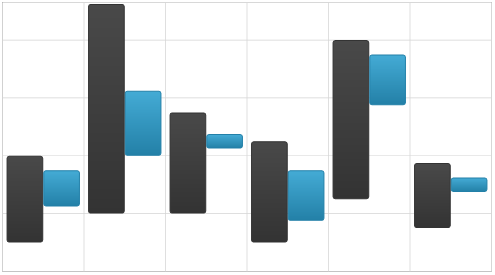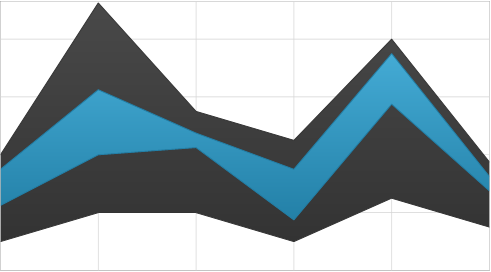
This topic explains various types of Range Series in the UltraDataChart™ control.
This topic contains the following sections:
Range Series is a group of the simplest and most common form of chart series that take data and render it as collection of data points stretched along a horizontal line (e.g. column series) or vertical line (e.g. bar series).
The UltraDataChart control supports the following types of Range Series and each of them is discussed in an individual topic:
These topics will provide you with useful information on how to use create a specific type of Range Series and bind data to it.
This section provides preview images for all types of Range Series.

Figure 1: Sample implementation of Range Column Series

Figure 2: Sample implementation of Range Area Series
The UltraDataChart control provides various types of axes but only the following types of axes can be used with specific types of Range Series. The following table lists these supported axes:
This section provides information about binding data for all types of Range Series from data requirements through data sample to binding diagrams.
Similarly to other types of series in the UltraDataChart control, Range Series also use DataSource property to bind data. The following is a list of data requirements for Range Series:
The data model should contain one data column (string or date time) which is mapped to the Label property of the category axis (e.g. CategoryXAxis) or the DateTimeMemberPath when using TimeXAxis.
The data model must contain one numeric data column which is mapped using the HighMemberPath property of range series
The data model must contain second numeric data column which is mapped using the LowMemberPath property of range series
The data source must contain at least one data items otherwise the chart will not render the range series.
The data source must implement the IEnumerable interface (e.g. List, Collection, Queue, or Stack)
For more information on the requirements for the specific types of series, refer to the Series Requirements topic.
An example of object that meets above criteria is the Sample Energy Data which you can download and use it in your project.